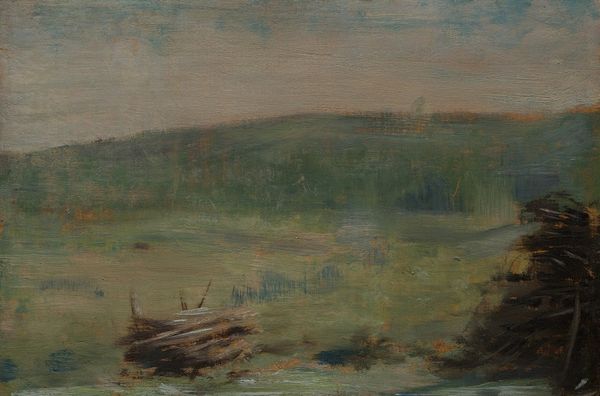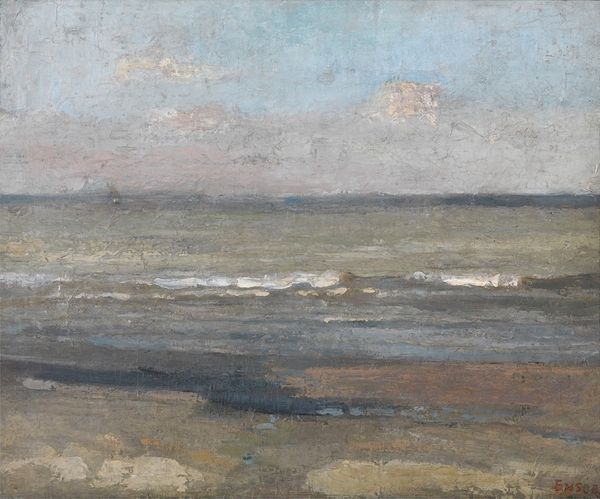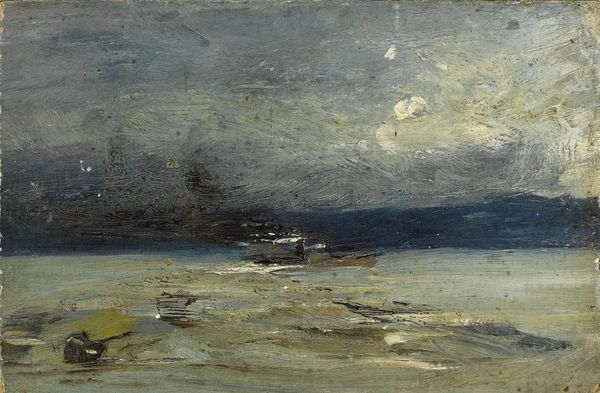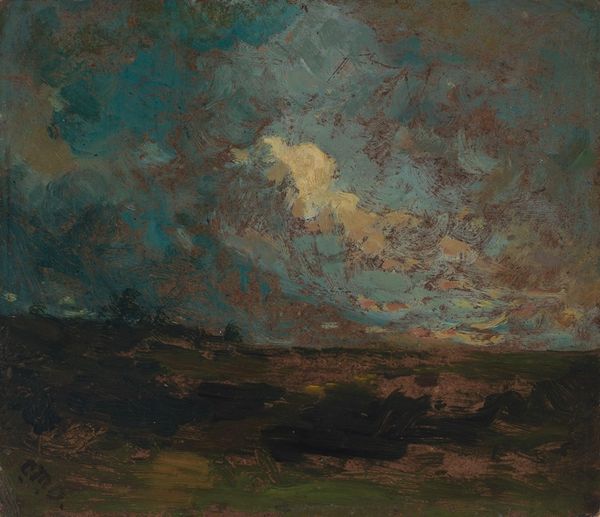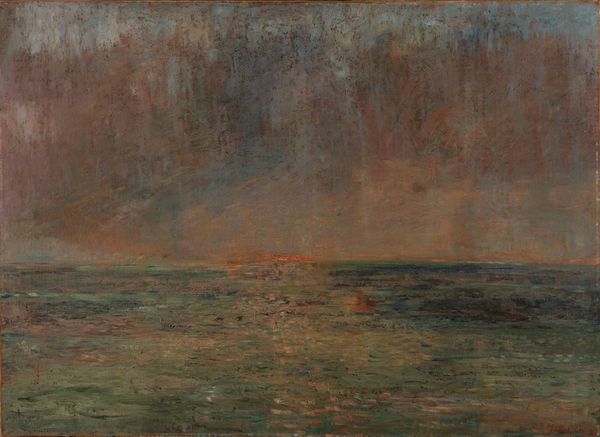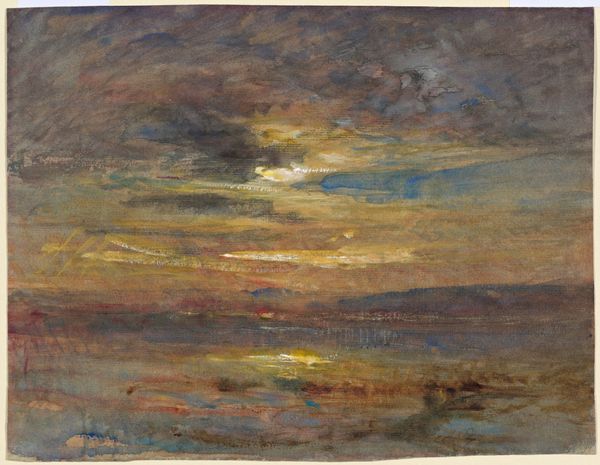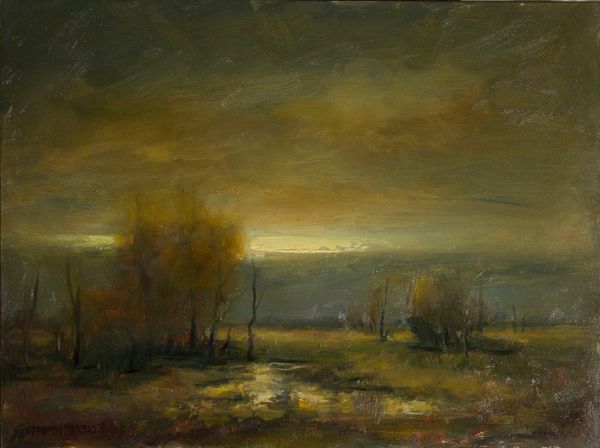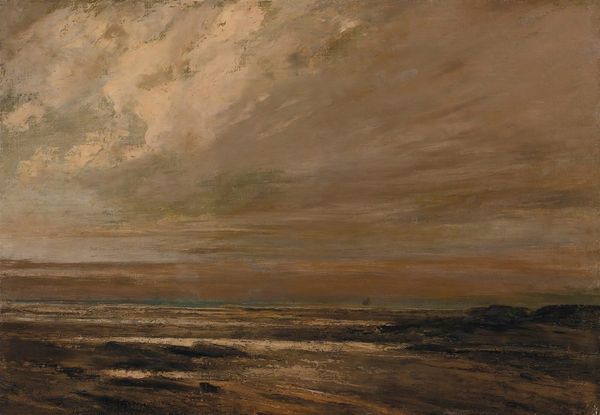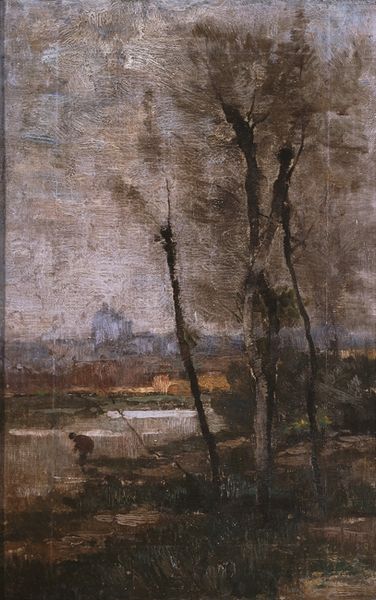
Copyright: Public domain
Editor: Here we have James Ensor's "Seascape" from 1880, rendered in oil paint with a heavily textured surface. I'm immediately struck by its somber mood. What do you see in this piece? Curator: Beyond the initial impression, I see a potent commentary on the socio-political climate of the late 19th century. Ensor, working in Belgium, was keenly aware of the burgeoning industrial revolution and its impact on the working class and the landscape. Does this muted palette and the churning impasto suggest to you a sense of unease or even protest? Editor: I can definitely see that now, especially considering the turbulent skies. It's as if the landscape itself is rebelling. Was Ensor known for imbuing his landscapes with political meaning? Curator: Absolutely. Ensor was deeply critical of the social order, and this discontent often found its way into his art. Think about the ways in which artists use landscape not just as scenery but as a stage for social commentary. Do you see a parallel, for instance, between the artist's rendering of the churning water and the roiling social unrest of the period? Editor: That's a powerful connection. I hadn’t considered the water representing the upheaval and struggles of the time. So, this isn't just a seascape; it's a statement. Curator: Precisely. By examining the formal elements alongside the historical context, we unlock a richer understanding of Ensor's vision and his engagement with the critical issues of his day. Editor: That gives me a lot to think about. Thanks for helping me to see this painting with new eyes! Curator: My pleasure! It’s important to consider how art reflects and shapes our understanding of the world around us.
Comments
No comments
Be the first to comment and join the conversation on the ultimate creative platform.

